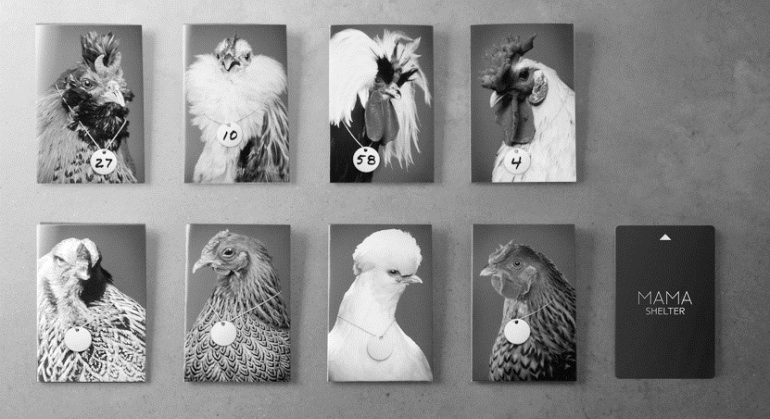In crafting an exceptional hotel experience, it’s the little things that count.
It’s human nature to be curious, and so it should come as no surprise that guests will leave no stone unturned during a resort hotel stay, peeking into every drawer and rifling through every magazine. Brands need to rise to the occasion during every step of the guest journey – engaging customers by satisfying their curiosity and enriching their experience.

Whether traditional or digital, every piece of hotel collateral from arrival to the point of departure should deliver the brand promise. These include often-overlooked opportunities like registration forms, luggage labels, key cards, brochures, signage and bathroom amenities. There is a tendency amongst many in the luxury hospitality sector to play it safe; they seem to be scared of displaying any intellectual playfulness when it comes to collateral design. But it doesn’t have to be this way.
Working closely with a designer, hotel brands should strategically take advantage of all these applications, which are fantastic vehicles for leaving an impression and forming bonds with the guests. Every piece of collateral is a natural platform for enhancing the brand essence. Simply slapping the hotel’s logo all over these items or labelling them in unimaginative ways misses a fantastic opportunity. The results are utterly boring, whereas well thought-out and relevant pieces of communication – using words and/or graphics – can grab attention and create moments of magic.
The very best items are so desirable, they become memorabilia, promoting the brand well beyond the hotel’s confined perimeter as they will travel all the way back to the guest’s home. The best of the best are shared online, through social media and on the pages of trendsetting publications.
Which one of these two door hangers is more likely to seduce? The one that says ‘Please do not disturb’, or the quirky example created by W Hotels: ‘WHEN? Not quite yet’. With this witty, ‘on-brand’ message, W not only shows confidence but also portrays the brand as one of the smart thinkers who understands the sophistication of their hip, intelligent guests.
Another good illustration of my idea of efficacious collateral comes from the London-based agency GBH. They describe their branding work for Mama Shelter as: ‘Positioned as affordable luxury, The Mama way is both warm and cosy but also surreal and surprising’. They created a set of key cards that feature portraits of chickens and allow the front desk to write room numbers on the medals that hang from the necks of the poultry models. There are also bathroom amenities that talk in the MAMA language.
In these examples, the use of wit is very rewarding. But beware: a too-witty idea that bewilders guests is worse than no idea at all. If the concept isn’t truly strategic and effective, you’d be better served by playing it straight with a boring conventional approach.
One way to assess whether the cue will be grasped or not is to test it amongst a few people outside of your organisation or department. If you’re in doubt, make sure the concept works both ways: whether the viewer gets the witty idea or not.
While creating design perfection can be a near impossible task, spectacular collateral is a cost-effective medium for communicating with guests. Their curiosity is your opportunity to surprise and delight them.
Pierre’s Tenets For Ensuring Your Design Collateral is a Strategic Success:
1. Make sure the brand essence and the tone of voice are well defined. If your brand is based on embracing the local culture, you might create collateral that educates the guest with images of artefacts accompanied by cultural legends.
2. Be inventive, and create collateral beyond the expected list of items. These pieces should fit your brand but create a unique experience.
3. Assess each application to see if it fits the brand characteristics and criteria.
4. Make sure the design of each element is relevant to its application.
5. Allocate adequate budgets for design, photography or illustration, and copywriting.
6. To quote Antoine de Saint Exupéry: “A designer knows he has achieved perfection not when there is nothing left to add, but when there is nothing left to take away.”